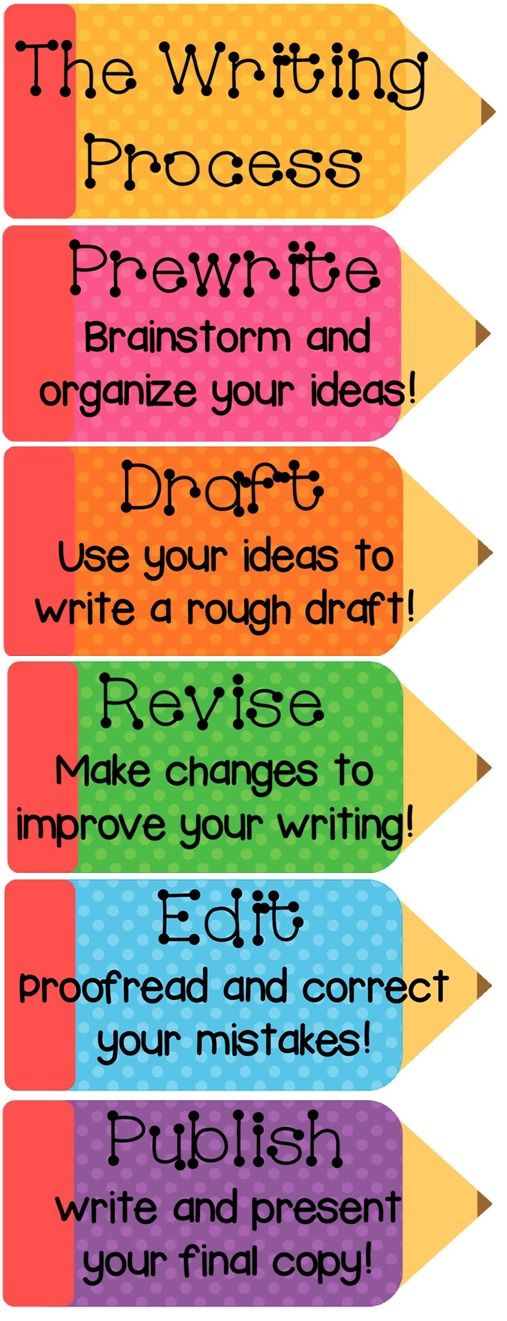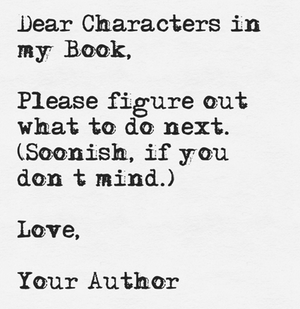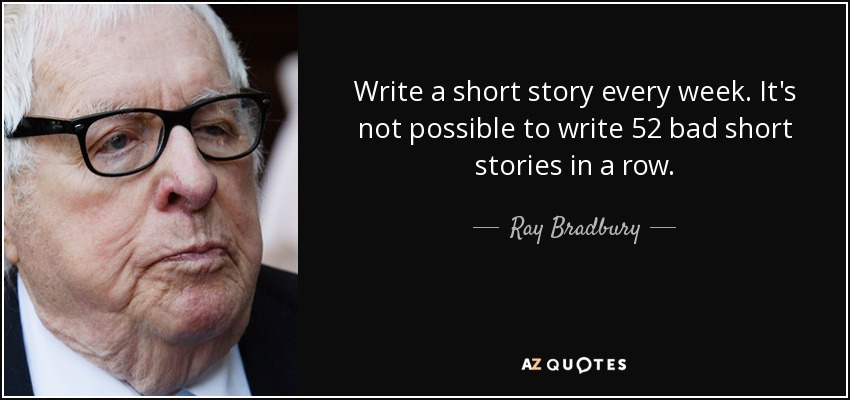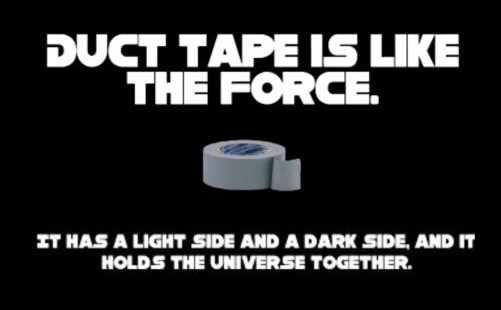You’re teats-deep in a story. And it feels like instead of swimming forward, your boots are stuck in the wet mud below. You need something to churn the waters. Loosen the mud. You need to unstick the stuck story.
Here, then — a list of 25 ways to help you do that. Most of these are plot- or story-focused — meaning, practical efforts to open that pickle jar. If you’re looking for solutions that lie beyond that focus and, say, land on you as a writer, maybe check out “25 Ways to Defeat Dread Writer’s Block.”
Now, let’s do this.
1. FORM OF: FLOPSWEAT! FORM OF: RETROACTIVE OUTLINE!
Sometimes, being stuck is the same thing as being caught at the crossroads of indecision — you don’t know which way the story should jump. Will Bob kiss Mary? Will Mary stab Bob? When does the Ancient Demonlord Humira-Adalimumab reveal himself? You ever open a refrigerator and stare into its depths for like, 15 minutes, completely paralyzed by your inability to decide what to eat? (“Chicken noodle soup? Old ham? New cheese? Daikon radish? AAAAGHH.”) This is like that. So: take the pressure off. Pull yourself out of the word-treacle. Do an outline. If you’ve done one already: re-do it, because this one hit a wall. Outlining cantake whatever form you choose: chapter-by-chapter, index cards, mind-map, human centipede.
2. ROADBLOCKS, SPEEDBUMPS, STOP SIGNS, AND ANGRY DRAGON CROSSINGS
Obstacles. Conflict. Pain and suffering. Sometimes, being stuck on a story is just because things are too easy. And “too easy” translates to *poop noise* BOOO-RING. Tease out your inner sadist. Tickle the taint of your own psychic Marquis de Sade. You need to start making life harder for the protagonist. Disrupt his quest. Set him back. Put everything you can in his way — and then even more as the story tumbles forward. Hurt him. Move the goalposts. Demand sacrifices. Complicate the journey. Remember, the worst business advice happens to be very good storytelling advice: elevate costs and eliminate convenience.
3. DIVERSIFY YOUR CHARACTER PORTFOLIO, MOTHERFUCKER
You’ve got all these characters and yet, you’re hovering over one character like a fly over a stinky diaper. Realize that you’ve got a kickass superpower: you can possess and take-over anybody inside the story. With the power of Point-of-View, you can drag us along for the ride. You can shove us into their eyes, their minds, you can force us to piggyback on their experiences past and present. Sometimes untangling a knotted-up tale means looking at it from different eyes: what better eyes than those of the other characters inside the story?
4. RECALIBRATE THE MOTIVATION MATRIX
You might be stuck because your characters are strangers to you. And that won’t do: you need to use this time to get to know them. Likes. Dislikes. Favorite ice cream flavor. Panty size. Sexual peccadilloes. And most important of all: motivation. These crazy assholes want something! So, what is it? It’s more than just a base level survival instinct — they need something. The desire, gnawing at them like rabid hamsters. Find out what that is. Once you know that, their path becomes clearer, their decisions certain. The story will move because they will carry it that way — and often straight into the thorny maw of conflict.
5. JOCK-STRAPS AND UNDER-WIRE BRAS
Your story needs more support. One of the ways we do that is to beef up the supporting cast. A strong and active supporting cast is powerful stuff — all those B-tier players who want to be A-tier. They have their own motivations, their own fears. Let loose a cabal of free-thinking characters into your story, it’s like dumping a sack of coffee-guzzling cats in your living room:shit will start to happen. Motivations cross! Agendas clash! CATS ASPLODE. Plot and story is really just a chain reaction of character motives put into action.
6. PARTYGOERS COME AND GO
You’re at a party, old guests exit, new ones enter. Two folks bail to go fuck each other on the fire escape. Two more arrive bringing an eight-ball of coke and a circus bear. Treat your story like just such a party: re-energize the narrative by pulling away from some characters and introducing new ones. A mysterious assassin! A prostitute with dubious motivations! An untrustworthy circus bear named “Mister Tickles!”
7. SEQUINS OF THE VENTS!
PLOT IS MADE OF SEQUINS WHICH ARE MADE OF VENTS OOOOH SO SHINY. *receives note* Oh. Okay. Sequence of events. I swear, my life is plagued by homophone problems. Someone says, “Meet me at Starbucks,” I show up at Starbucks and pelt them with ground beef. Anyway. Sometimes, a story trips itself on a snarled-up sequence-of-events, AKA, “plot.” The wordplothole is not precisely accurate in describing what’s really happening: a plothole is really a gap in the sequence of events, where that gap would and should feature the proper information that would bridge Point A to Point Z. You say, “I don’t know how Dave gets to the moon, he’s just… there.” You’ve failed to provide the proper connection, to bridge that gap with the necessary narrative data. Simply put: the bridge is out. Which means the journey cannot continue. Find these gaps. You probably already know where and what they are. Fix them now. Writing needn’t be linear. Go back. Add content and context. Fill the holes. Mind the gap. SHINY SEQUINS.
8. THE PLOT BENEATH THE FLOORBOARDS
Sometimes our stories get constipated because of a too-samey, unvaried diet. You live off of Eggo waffles and buttermilk for a couple weeks, your personal plumbing is going to get boggy. A story is like that: we have one major plotline and it chugs along without any time for anything else, and somehow it seems to grow enervated, slowing down before eventually miring itself in grave ennui. ENTER THE SUBPLOT. One or several subplots perform a powerful task: they create alternate related stories that distract from the larger plot while also making us pine for it. Further, when done correctly, they prove energy and narrative information to the larger plot. The big plot feeds off the little ones. The little stories contribute to the larger.
9. DROP ACID, HAVE FLASHBACKS
Consider the reported therapeutic value of LSD, wherein psychologists used to use it to jar loose those mental boulders that are jamming up our brain-canyon. Now, consider the value of running your story through the same gauntlet — meaning, maybe it’s time for your tale to trip balls. Flashbacks. Hallucinations. Dream sequences. Cryptic visuals. Foreshadowing events. All of these force the story to take a (temporary) left turn. Deviations from the expected course, as with subplots above, do a lot to give extra impetus and urgency (and a booster shot of valuableuncertainty) to the narrative. Give your story a little acid. Let it run naked through Wal-Mart, fighting invisible goblins with a soup ladle.
10. THE MYSTERIOUS MYSTERY OF THE QUESTIONING QUEST
Introduce a new mystery. Something that just doesn’t add up. The story seems to be going one way, and then suddenly the protagonist gets a package: a steamer trunk full of severed heads, a strange journal written by a long-dead reanimator, or — *crash of thunder* — A FRUIT-OF-THE-MONTH CLUB DELIVERY THREE MONTHS AFTER THE DELIVERIES ENDED. Okay, maybe not that last one. Point is, jamming a big fucking shiny-ass question mark into the ground like you’re planting the flag on Iwo Jima is powerful: question marks have gravity. They draw us toward them. (If you’re really brave, introduce a mystery to which you do not yet have the answer. That can give you major juice — but it can also sink you further into the mire.)
11. STEAL YOUR PROTAGONIST’S SHOES THEN MAKE HIM WALK ON GLASS
Storytelling is an act of cruelty. We are cruel to our characters because to be kind is to invite boredom, and boredom in storytelling is synonymous with big doomy death-shaped death. So: be cruel to your protagonist. Rob him of something. Something important. Something he needs. A weapon. An asset. A piece of knowledge. A loved one. A DELICIOUS PIE. Take it away! Force him to operate without it. Conflict reinvigorates stale stories. New conflict, or old conflict that has evolved and grown teeth.
12. SOMEONE ISN’T WHO THEY SAY THEY ARE
Consider the value of the midpoint twist. No, it’s not a new dance. It’s a bit of narrative stuntery. Stuntery isn’t a word? IT’S MY BLOG YOU SHUT UP OR I’LL THROW YOU OUT AN AIRLOCK. I’m sure I have airlocks around here somewhere. Point is: there comes a time in the narrative when you have an opportunity to take pre-existing elements and twist them sharply. (The next several items on this list actually lend themselves toward that notion.) One option is that someone in the story is not who they say they are. A criminal is actually a cop. A loved one is a secret monster. A parent is a butthole-sucking tapeworm alien from space. Someone’s mask comes off. Someone’s true face is revealed.
13. THE KNIFE IN THE BACK
A dread betrayal! A turn of friend to enemy! Someone betrays the protagonist. Or more than that: betrays the plan, betrays the town, the Earth, the Omniverse. At the last second, he sabotages the MacGuffin Machine! He urinates in the water supply! He steals the protagonist’s keys and throws them in a storm drain! HE EATS THE LAST OF THE LUCKY CHARMS. I’m sure you can think of far better betrayals (murrrderrrr). Any impactful event in a story — particularly one that pivots the tale in an unexpected direction — takes that story and shakes it like a baby. Er, metaphorically speaking. Please don’t shake babies.
14. “NO, FATHER, I DID NOT POOP IN YOUR TOOLBOX. IT WAS. . . A GHOST. IT’S GHOST POOP. TOTALLY FROM A GHOST. PLEASE DO NOT INVESTIGATE THIS FURTHER.”
Someone has a secret. And they’re forced to lie about it. That there is a kick-ass one-two punch combination to give some oomph to an ass-dragging story. Secrets and lies are a simple and surprisingly effective way to introduce fresh conflict born from pre-existing characters and plotlines. Someone is fucking someone they’re not supposed to be. Someone makes a mistake. Someone has a part of a dark past that threatens to be revealed. Lies aim to cover up, but lies beget more lies: deception is a gremlin you get wet and then feed after midnight. It multiplies and turns into an uncontainable monster.
15. KILL SOME POOR SUMBITCH
Storytelling feels like an act of magic, and some magic is ritualized, and a great deal of ritual magic requires a sacrifice upon its altar. Your story is full of precious lambs — I mean, “characters.” Take one. Preferably one that matters (not, say, “Tom the Cab Driver who shows up for one paragraph in Chapter Four”). Then: off them. As a part of the plot, of course; I don’t mean like, drop a fucking anvil on their heads. But just the same: kill them. Death is a boulder dropped into a lake: it doesn’t just create ripples. It creates waves. It splashes on everybody. It gets still waters moving.
16. ILL-ADVISED ROMANTIC PAIRING
Take two characters who should not be making kissy-kissy (or, fucky-sucky, or, bondagey-wondagey) and make them do exactly that. It works because we know it should not work. Forgive the deviation, but here’s a valuable note: suspense and tension is created when characters we love perform actions we hate. They make mistakes. They choose poorly. They open doors they’re not supposed to open, they steal something we know they shouldn’t steal, they smoosh their genitals up against someone whose genitals should be caution, cuidado, verboten. This works because we, the audience, know to fear certain acts as we (wisely) suspect the outcome will be bad. We love our protagonists. We want them safe! We want them to choose wisely! Which is why we, as writers, work often (and work hard!) to punish the audience through the characters on the page. The “ill-advised romantic pairing” is just one example of a particular path of storytelling which goes like this: “Identify the thing that the audience fears will happen, then engineer that very thing so that it happens in a way that’s worse than they ever imagined.”
17. KEEP THROWING THE STORY OFF THE CLIFF
Dickens knew it. The old pulp serials knew it. Sometimes, you have to keep the audience’s attention by throwing your entire storyworld (plot, characters, ideals) into perilous imperiled peril. And, since you might be considered Audience Zero for your own story, this works when writing, too — constantly drop-kick your story off the cliff’s edge. Make that poor fucker hang there by his fingernails. Create interesting problems. Invoke certain danger. Write your way out of the trap. The challenge may engage all your creative synapses.
18. RAISE THE STAKES
I like to raise the steaks to my mouth and EAT THEM YUM YUM NOM NOM wait I’m doing it again. Goddamn you, homophones! Ahem. Raising the stakes, narratively speaking, means that the consequences of failure get worse. It means that the task becomes harder. It means that new information makes everything more complicated. You are, in storytelling parlance, “stickying the wicket.” Fine, whatever, nobody says that. (But it makes a charming euphemism for masturbation!) Suddenly the protagonist’s goal isn’t just about saving the love of her life — it’s about saving the world. Or it’s about making a choice: save that love or save the world orfind the needle-threading third option that saves everybody. Amp the conflict. Make it harder. Make it cost more. Make it even more important. Boom.
19. HERO GRABS THE STORY BY THE YAM-BAG
This one’s simple: a story will suffer log-jam if the hero has been passive. So much relies then on external events it grows tiresome and, in some cases, narratively prohibitive in terms of the effort you have to put into the way the world constantly acts upon him. Reverse that. Time for the hero to grab the story by its story-balls and take control. This isn’t the same thing as making the hero successful — it’s just about making the protagonist active and complicit in the narrative.
20. THREAT LEVEL: PHYSICAL, EMOTIONAL, PHILOSOPHICAL
Your story might be firing on one cylinder, when really, it needs to fire on three: the goals of the protagonist and the conflicts that work against him must cross three axes: physical, emotional, philosophical. Physical: “I am in danger of being eaten alive by a starving were-badger.” Emotional: “But the starving were-badger is my true love, Betty McGoohan.” Philosophical: “If I cannot reconcile this and the story demands I slay my true love, then love cannot succeed in the face of evil and I am forced to accede to a cynical worldview in which monstrousness is ascendant and all my victories are Pyrrhic and were-badgers are neither cuddly nor sexy.” Harness all three axes for powerful story-combo power-up extra-life ding.
21. SIT DOWN, RIGHT NOW, AND FIGURE OUT YOUR ENDING
Sometimes, it’s nice to just get in the car and go. Enjoy the scenery. No destination. But other times, you end up just driving in circles and seeing nothing of value. A story is a journey with a very specific function. A story is a journey that has a destination at its culmination — it is not a disconnected series of pretty pastoral vignettes. (“Look, honey, cows. For 300 pages. Cows. Just standing around. Chewing cud. Pooping. Goddamn cows.”) Your journey needs an end point. It needs a thumb-tack in a map that says, “THIS IS WHERE I AM FUCKING GOING.” Sit down. Right now. Figure out your ending. It may not be the ending you use, but you’d be amaze at how unstuck you’ll get when you know what direction you should be going.
22. PLAY THE “WHAT IF?” GAME
Being stuck in the story often means hovering at a single point and saying, “I don’t know what happens next.” The simplest game to play to get you out of that is to ask “What If?” like, several dozen times, answering differently each time. Write each what if down, even if unanswered. What if he kills the antagonist now? What if he fails and gets captured? What if he snaps and goes nuts? WHAT IF HE BECOMES A MAGICAL OWL-MAN WHO RIDES A STEED MADE OF CLANKING TIN-CANS AND CARRIES A SWORD MADE OF SQUIRRELS? Don’t worry. It’ll get crazy. It’s supposed to. But it’ll set the pot to boil. Somewhere in there, you’ll find the answer presents itself. Like a flower to a bee desiring sweet pollination.
23. DETERMINE THE MOST INSANELY UNEXPECTED COURSE OF ACTION, THEN DO THAT SHIT
True fact: storytelling isn’t always an act of precision. Time comes, a story’s gotta get messy. Untamed. Unhindered. Sometimes, a story just gets fucking weird, which means you, the storyteller, gotta get weird with it. You say you’re stuck? Fine. Take your story and drop anuclear narrative event upon it. Change everything. Go crazy. Ruin the world. Make the antagonist the protagonist. Blow things up. Whatever the audience expects would not — could not — happen? Do it. It’ll unseat that stuck story right quick.
24. KILL THE LAST TEN THOUSAND WORDS
Another rather extreme assertion, one that will surely turn your gut sour: go back five thousand — maybe ten thousand — words, highlight, then click delete. You’ll gasp. You’ll gape. You’ll pee five, maybe ten, drops of anxiety-urine. But then: ahhh. A sudden sigh. A giddy elation. Whatever was jamming you up is now gone. You are free to move forward. This seems extreme but consider: storytelling is sometimes walking a maze and walking a maze means hitting dead-ends. When you hit a dead-end, the only solution is to backtrack until you can find the proper path. It is hard. But you will move forward, unfettered.
25. PUNCH, KICK, THINK, THEN WRITE YOUR WAY THROUGH IT
You’re stuck? Poor you. Fuck it. It’s a mental thing. Don’t give in. Think through it. Karate-punch the story. Kick it in the teeth until it yields. You’re the boss. Worse comes to worse: write around the gap. Got a section where you don’t know what happens? Write in 144-point font: WHO THE FUCK KNOWS? FIGURE THIS FIDGETY SHIT OUT LATER and then write the next section. A stuck story might be you feeling stuck when really, the story’s zipping along just fine. And even if there really is a problem, you can’t always identify the problem until you’re done the whole damn thing. So: you’re stuck? Fuck it. Fuck you. You’re not the horse.You’re the rider. The one with the spurs, the buggy whip, the carrot at the end of a stick. Make it move. Get it done. Your words are a battering ram: knock the door down and walk on through.
 Thursday, October 19, 2017 at 03:29PM
Thursday, October 19, 2017 at 03:29PM 




